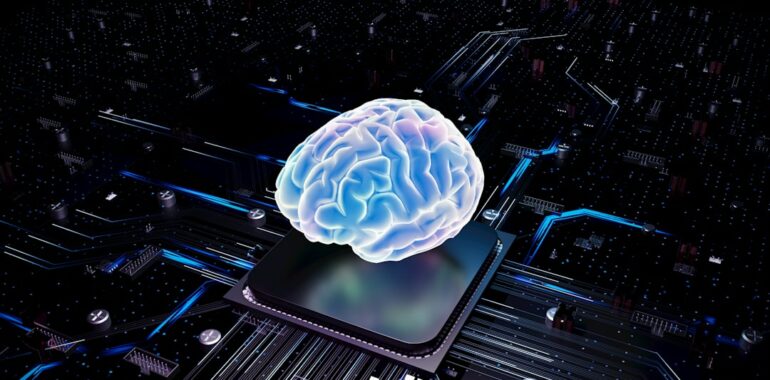AI vs Machine Learning vs Deep Learning: Understanding the Key Differences

Artificial Intelligence (AI), Machine Learning (ML), and Deep Learning (DL) are terms often used interchangeably in today’s tech-driven discussions. However, understanding their distinct roles and differences is crucial for anyone navigating the modern technological landscape. This article elucidates these differences, explores their unique applications, and examines their impact on businesses and the economy.
What is Artificial Intelligence?
Artificial Intelligence is the broadest concept among the three, encompassing the creation of machines that can perform tasks typically requiring human intelligence. AI aims to simulate cognitive functions such as learning, reasoning, problem-solving, perception, and language understanding.
Key Characteristics of AI:
– Autonomous Decision-Making: AI systems can make decisions without human intervention.
– Adaptability: AI can adapt to new information and adjust its operations accordingly.
– Versatility: AI applications range from simple automation to complex problem-solving in various industries.
Examples of AI:
– Virtual Assistants: Tools like Siri and Alexa that understand and respond to voice commands.
– Autonomous Vehicles: Cars that can navigate and drive themselves without human input.
– Recommendation Systems: Platforms like Netflix and Amazon that suggest content based on user preferences.
What is Machine Learning?
Machine Learning is a subset of AI focused on the development of algorithms that allow computers to learn from and make decisions based on data. Instead of being explicitly programmed for every task, ML systems improve their performance as they are exposed to more data over time.
Key Characteristics of ML:
– Data-Driven: ML relies heavily on large datasets to identify patterns and make predictions.
– Algorithm-Based: Utilizes statistical methods and algorithms to learn from data.
– Continuous Improvement: ML models can improve their accuracy and efficiency with additional data and training.
Examples of ML:
– Spam Filters: Systems that learn to identify and block unwanted emails.
– Fraud Detection: Algorithms that analyze transaction patterns to detect fraudulent activity.
– Predictive Maintenance: Predicting equipment failures before they occur by analyzing usage data.
What is Deep Learning?
Deep Learning is a specialized subset of Machine Learning that employs artificial neural networks with multiple layers (hence “deep”). These neural networks mimic the human brain’s structure and function, enabling the processing of vast amounts of data to recognize intricate patterns and features.
Key Characteristics of DL:
– Neural Networks: Utilizes layers of interconnected nodes (neurons) to process data.
– High Complexity: Capable of handling and interpreting highly complex data structures like images, audio, and text.
– End-to-End Learning: Can automatically extract features from raw data without the need for manual feature extraction.
Examples of DL:
– Image Recognition: Systems that can identify objects, faces, and scenes within images with high accuracy.
– Natural Language Processing (NLP): Tools that understand and generate human language, such as chatbots.
– Autonomous Driving: Advanced driving systems that interpret various sensory inputs to navigate safely.
Key Differences Between AI, ML, and DL
Understanding the hierarchy and distinctions between AI, ML, and DL is essential for grasping their unique contributions to technology.
Scope and Complexity
- AI: The overarching discipline aimed at creating intelligent systems.
- ML: A subset of AI that focuses on algorithms allowing machines to learn from data.
- DL: A subset of ML that uses deep neural networks to model complex patterns in large datasets.
Data Dependency
- AI: Can operate with or without data, depending on the application.
- ML: Highly dependent on data for training and improving accuracy.
- DL: Requires vast amounts of data and computational power to train deep neural networks effectively.
Feature Engineering
- AI: May involve both manual and automated feature engineering.
- ML: Often requires significant feature engineering to extract relevant features from data.
- DL: Minimizes the need for manual feature engineering by automatically learning feature representations.
Use Cases
- AI: Broader applications including robotics, expert systems, and strategic game playing.
- ML: Specific applications like predictive analytics, recommendation systems, and anomaly detection.
- DL: Specialized applications in image and speech recognition, autonomous vehicles, and advanced language models.
Applications of Each in Modern Tech
Each domain—AI, ML, and DL—offers unique applications that drive innovation across various industries.
Artificial Intelligence Applications
- Healthcare: AI-driven diagnostics and personalized treatment plans.
- Finance: Automated trading systems and risk assessment.
- Entertainment: Content creation and personalized user experiences.
Machine Learning Applications
- Marketing: Customer segmentation and targeted advertising.
- Manufacturing: Supply chain optimization and quality control.
- Retail: Inventory management and demand forecasting.
Deep Learning Applications
- Autonomous Vehicles: Real-time decision-making and environment perception.
- Healthcare: Advanced medical imaging and predictive diagnostics.
- Natural Language Processing: Machine translation and sentiment analysis.
The Impact on Businesses and the Economy
The integration of AI, ML, and DL into business operations has profound implications for efficiency, innovation, and economic growth.
Enhanced Decision-Making
Businesses leverage AI and ML to analyze vast datasets, enabling more informed and strategic decisions. This leads to improved operational efficiency and the ability to anticipate market trends.
Cost Reduction
Automation of repetitive tasks through AI and ML reduces operational costs and allows human resources to focus on more complex and value-added activities.
Innovation and New Opportunities
Deep Learning drives innovation by enabling the development of new products and services that were previously unattainable, fostering competitiveness and opening new market opportunities.
Economic Growth
The adoption of AI technologies contributes to economic growth by increasing productivity, creating new job categories, and enhancing the overall technological infrastructure.
How to Integrate Machine Learning and Deep Learning Structurally
Integrating ML and DL into an organization requires a strategic approach to ensure seamless adoption and maximum benefit.
Develop a Clear Strategy
Outline the specific goals and objectives for implementing ML and DL technologies within the business context.
Invest in the Right Infrastructure
Ensure access to high-performance computing resources, data storage solutions, and relevant software tools required for ML and DL operations.
Cultivate Talent and Expertise
Build a team of skilled professionals with expertise in data science, ML algorithms, and neural network architectures to drive the integration process.
Foster a Data-Driven Culture
Encourage data-centric decision-making across the organization by leveraging insights derived from ML and DL models.
Collaborate and Innovate
Engage with industry leaders, academic institutions, and technology partners to stay abreast of the latest advancements and best practices in AI, ML, and DL.
Conclusion
AI, Machine Learning, and Deep Learning are interrelated yet distinct fields that collectively drive the advancement of intelligent technologies. Understanding their differences and applications is essential for leveraging their full potential in modern business environments. As these technologies continue to evolve, their impact on industries and the global economy will only grow, paving the way for a more intelligent and efficient future.
“The future belongs to those who understand and harness the power of AI, machine learning, and deep learning.”
Discover how GenAI.London can empower your journey in AI and Machine Learning. Visit us now!




